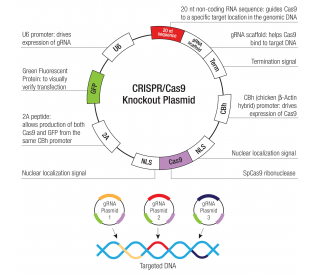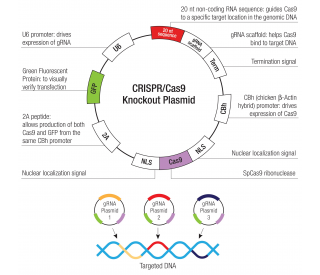详细说明
Species Reactivity
Human, Mouse, Rat
Specificity
Detects human, mouse, and rat GAPDH/G3PDH in direct ELISAs and Western blots. In direct ELISAs, approximately 10% cross-reactivity with recombinant human GAPDH-2 is observed.
Source
Polyclonal Goat IgG
Purification
Antigen Affinity-purified
Immunogen
E. coli-derived recombinant human GAPDH/G3PDH
Met1-Ala150
Accession # P04406Formulation
Lyophilized from a 0.2 μm filtered solution in PBS with Trehalose. *Small pack size (SP) is supplied as a 0.2 µm filtered solution in PBS.
Label
Unconjugated
Applications
Recommended
ConcentrationSample
Western Blot
1 µg/mL
See below
Simple Western
10 µg/mL
See below
Immunohistochemistry
5-15 µg/mL
See below
Immunocytochemistry
5-25 µg/mL
See below
Please Note: Optimal dilutions should be determined by each laboratory for each application. are available in the Technical Information section on our website.
Data Examples
Western Blot | Detection of Human/Mouse/Rat GAPDH/G3PDH by Western Blot. Western blot shows lysates of mouse, human, and rat brain tissue. PVDF membrane was probed with 1 µg/mL of Goat Anti-Human/Mouse/Rat GAPDH/G3PDH Antigen Affinity-purified Polyclonal Antibody (Catalog # AF5718) followed by HRP‑conjugated Anti-Goat IgG Secondary Antibody (Catalog # ). A specific band was detected for GAPDH/G3PDH at approximately 38 kDa (as indicated). This experiment was conducted under reducing conditions and using . |
Immunocytochemistry | GAPDH in HeLa Human Cell Line. GAPDH was detected in immersion fixed HeLa human cervical epithelial carcinoma cell line using Goat Anti-Human/Mouse/Rat GAPDH Antigen Affinity-purified Polyclonal Antibody (Catalog # AF5718) at 5 µg/mL for 3 hours at room temperature. Cells were stained using the NorthernLights™ 557-conjugated Anti-Goat IgG Secondary Antibody (red; Catalog # ) and counterstained with DAPI (blue). View our protocol for . |
Immunohistochemistry | GAPDH/G3PDH in Human Kidney. GAPDH/G3PDH was detected in immersion fixed paraffin-embedded sections of normal human kidney using Goat Anti-Human/Mouse/Rat GAPDH/G3PDH Antigen Affinity-purified Polyclonal Antibody (Catalog # AF5718) at 8 µg/mL overnight at 4 °C. Tissue was stained using the Anti-Goat HRP-DAB Cell & Tissue Staining Kit (brown; Catalog # ) and counterstained with hematoxylin (blue). Specific staining was localized to cytoplasm and nuclei of convoluted tubules. View our protocol for .This application has not been tested in mouse or rat samples. |
Immunohistochemistry | GAPDH in Human Prostate Cancer Tissue. GAPDH was detected in immersion fixed paraffin-embedded sections of human prostate cancer tissue using Goat Anti-Human/Mouse/Rat GAPDH Antigen Affinity-purified Polyclonal Antibody (Catalog # AF5718) at 3 µg/mL for 1 hour at room temperature followed by incubation with the Anti-Goat IgG VisUCyte™ HRP Polymer Antibody (Catalog # ). Tissue was stained using DAB (brown) and counterstained with hematoxylin (blue). Specific staining was localized to cytoplasm and nuclei. View our protocol for . |
Simple Western | Detection of Human GAPDH by Simple WesternTM. Simple Western lane view shows lysates of human brain (motor cortex) tissue and HepG2 human hepatocellular carcinoma cell line, loaded at 0.2 mg/mL. A specific band was detected for GAPDH at approximately 43 kDa (as indicated) using 10 µg/mL of Goat Anti-Human/Mouse/Rat GAPDH Antigen Affinity-purified Polyclonal Antibody (Catalog # AF5718) followed by 1:50 dilution of HRP-conjugated Anti-Goat IgG Secondary Antibody (Catalog # ). This experiment was conducted under reducing conditions and using the 12-230 kDa separation system. |
Preparation and Storage
Reconstitution
Reconstitute at 0.2 mg/mL in sterile PBS.
Shipping
The product is shipped at ambient temperature. Upon receipt, store it immediately at the temperature recommended below. *Small pack size (SP) is shipped with polar packs. Upon receipt, store it immediately at -20 to -70 °C
Stability & Storage
Use a manual defrost freezer and avoid repeated freeze-thaw cycles.
12 months from date of receipt, -20 to -70 °C as supplied.
1 month, 2 to 8 °C under sterile conditions after reconstitution.
6 months, -20 to -70 °C under sterile conditions after reconstitution.
Background: GAPDH
Glyceraldehyde-3-phosphate dehydrogenase (GAPDH) is a 36‑40 kDa member of the GAPDH family of enzymes. It is a widely expressed heterotetramer that is found in both the nucleus and cytoplasm. Although GAPDH was initially identified as a glycolytic enzyme that converted G3P into 1,3 diphosphoglycerate, it is now recognized to participate in no less than endocytosis, membrane fusion, vesicular secretory transport, DNA replication and repair, and apoptosis. Human GAPDH is 335 amino acids (aa) in length and contains two NAD binding sites (Asp35 and Asn316) with a catalytic region between aa 151‑155. GAPDH contains more than 19 posttranslational modifications, including methylation, deamidation and phosphorylation. One splice variant shows a 10 aa substitution for aa 319‑335. Over amino acid 1‑150, human GAPDH shares 92% aa identity with mouse GAPDH.
Long Name:
Glyceraldehyde-3-phosphate Dehydrogenase
Entrez Gene IDs:
2597 (Human); 14433 (Mouse); 24383 (Rat)
Alternate Names:
aging-associated gene 9 protein; EC 1.2.1; EC 1.2.1.12; EC 2.6.99.-; G3PD; G3PDH; GAPDH; GAPDPeptidyl-cysteine S-nitrosylase GAPDH; glyceraldehyde 3-phosphate dehydrogenase; glyceraldehyde-3-phosphate dehydrogenase; MGC88685







![Anti-CARD11 antibody [EPR2557] 100µl](https://yunshiji.oss-cn-shenzhen.aliyuncs.com/202407/25/ryuecwsu03m.jpg)
![Anti-CARD11 antibody [EPR2557] 40µl](https://yunshiji.oss-cn-shenzhen.aliyuncs.com/202407/25/0l4lvuuesv1.jpg)

![Anti-Caspase-9 antibody [E23] 100µl](https://yunshiji.oss-cn-shenzhen.aliyuncs.com/202407/25/3jnd4412gqi.jpg)

![Anti-CKS2 antibody [EPR7946(2)] 100µl](https://yunshiji.oss-cn-shenzhen.aliyuncs.com/202407/25/cfdt44gkqre.jpg)



 粤公网安备44196802000105号
粤公网安备44196802000105号